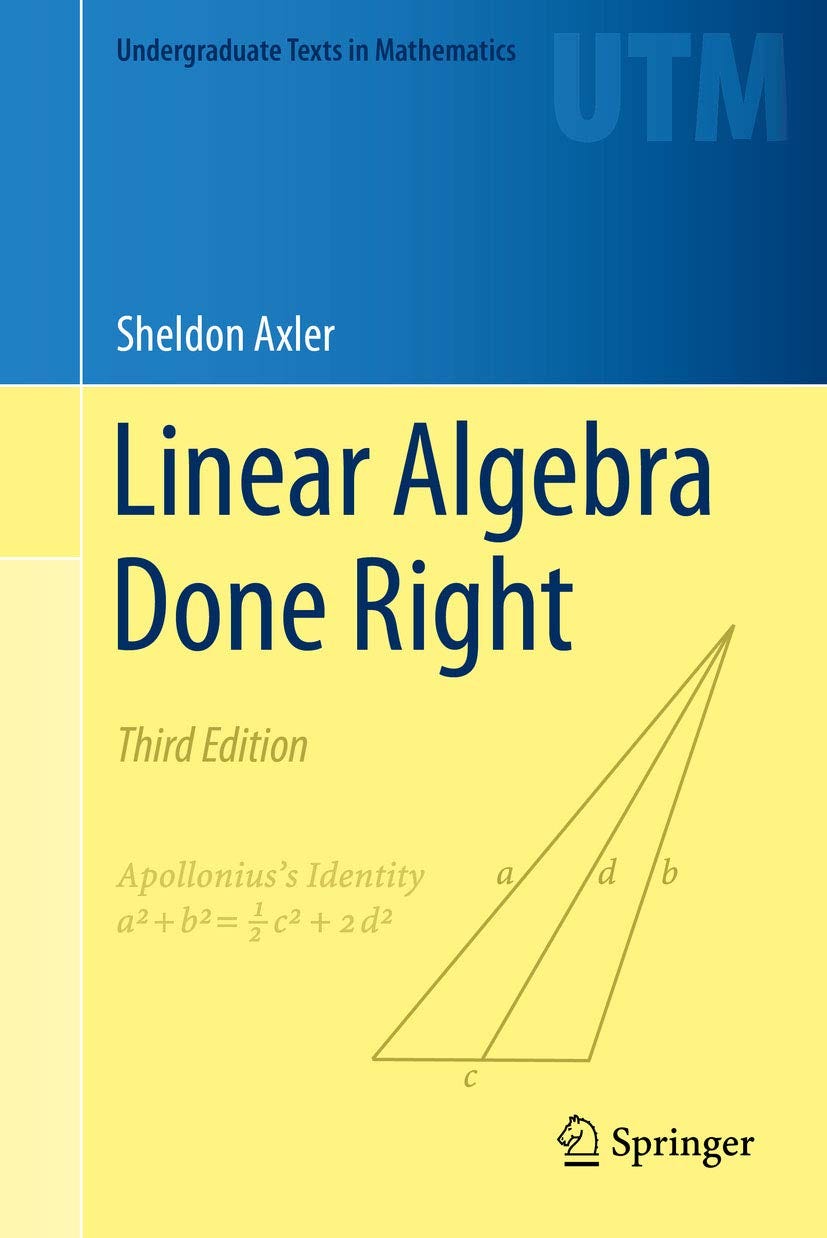Six-Star Textbooks on a One to Five Scale: A List
Most textbooks aren't great. These are the select few I consider triumphs of pedagogy.
In my 21 years of school, I’ve been exposed to a truly incredible number of textbooks. Most of them suck. Some are too concise, some too verbose, too boring, too basic, too complex, etc. I find textbooks in particular to be an excellent example of Sturgeon’s Law, which states that “90% of everything is crap.”
That being said, I have occasionally come across textbooks that, for whatever reason, are simply awesome at teaching their chosen subject. I’ve collected the ones that I can remember, with a short description of why I think their teaching method is so effective. The subject matter is heavily biased towards my own interests, and thus skews heavily to math and physics, with a couple of ancient languages thrown in.
This is not a ranked list of textbooks for learning any given subject — this is a list of textbooks that I would rate 6/5 stars — truly best-in-class in their field. The difficulty ranges from introductory/undergraduate level to advanced graduate research level.
This post will also be a “living document” — as I read or recall more excellent textbooks, I will append them to the list.
Linear Algebra Done Right
by Sheldon Axler
Level: Undergraduate
Despite the terrible typesetting of the webpage (click the book title to see what I mean), I can honestly say this is the best math textbook I have ever read, and the only one I have ever read cover-to-cover. The basic thesis of this textbook is that determinants are unintuitive and bad pedagogy, and that understanding the structure of linear operators is much easier without them. After reading this book, I agree.
Optimal Control Theory
by Donald E. Kirk
Level: Graduate
Among other things, this book is simply the best resource on calculus of variations that exists. Optimal control theory is a cool field in general, and Kirk’s book has excellent derivations and examples, done with sufficient detail to make them easy to follow and understand. I really appreciate the effort he takes in walking you through every single boundary condition for calculus of variations — it’s the only place I’ve ever seen it, and extremely useful as a reference.
Introduction to Electrodynamics
by David J. Griffiths
Level: Undergraduate
This book convinced me that I liked electromagnetism. During my (extremely E&M-heavy PhD) I used this book as a reference, supplemented by Jackson’s infamous E&M textbook for the occasional really nasty math. Come for the first-principles explanations of complex concepts in intuitive terms, stay for Griffiths’ really bad jokes. His quantum mechanics textbook is also excellent.
Lasers
by Anthony E. Siegman
Level: Varies from Undergraduate to Graduate depending on subject
Tony Siegman’s textbook is the best resource you can find on laser physics and gaussian beam optics. His chapters on matrix optics should be required reading for any optics student. This book is less of a continuous narrative to be read cover-to-cover, and more of a “reference+” manual — any problem you have with a laser is likely to be explained in detail in this book. No quantum mechanics required, either!
Order of Magnitude Physics: Understanding the World with Guesswork and White Lies
Level: Advanced High School/Undergraduate
by Peter Goldreich, Sanjoy Mahajan, and Sterl Phinney
I really suggest reading the summary of their textbook proposal. “Even after years of our teaching, physics students do not think like physicists.” This is the best book I’ve ever encountered for actually teaching you how to think like a physicist.
In essence, it teaches you the same thing that my undergrad E&M TA taught us — the best way to solve a problem is to already know the right answer:
Your first step when confronted with a novel problem is to simplify it down to its essence. Strip away all details, ignore complicating factors, linearize everything that can be linearized.
Use your intuition to guess at how solutions might look. Try out some numbers, see how reasonable your guesses are. Find an upper and lower bound for the solution.
Invert the problem, formulate it backwards to see if it’s simpler that way. Draw it, apply your spatial reasoning to the problem, make analogies to other, solved problems.
Once you understand the shape of the problem, and have a reasonable guess at the answer, formalize it, do the math, and check your negative signs and exponents.
This book teaches you the first two steps, and does it brilliantly. Although, it’s wise to always check the literature beforehand, usually some 1940’s Soviet Radiophysics journal has a solution to your problem already.
Though I haven’t read much of it, I also recommend its spiritual partner, Street-Fighting Mathematics.
Lingua Latina Per Se Illustrata
by Hans H. Ørberg
Level: Complete Novice
Salvete! This book teaches you to read Latin by forcing you to actually read Latin. There is no English in this book — even the grammar sections are written entirely in Latin. Ørberg gradually walks you through most aspects of the Latin language, so that if you carefully read the entire thing (and do all the exercises), you will have a working knowledge of Latin by the end. Really, really excellent book.
However, I strongly recommend looking up the case system beforehand if you have no exposure to highly inflected languages. Check out this link.
How to Read Egyptian Hieroglyphs
by Mark Collier (Author), Bill Manley (Author), Richard Parkinson (Illustrator)
Level: Complete Novice
The best beginner’s book on Middle Egyptian. This book skips all the nuances of Middle Egyptian’s complex and confusing verbal system, in favor of teaching you the alphabet, words, common phrases, and enough grammar to understand them through the medium of real Ancient Egyptian inscriptions. Instead of putting you through the grammar wringer, it gives you a basic, working knowledge of the structure of Ancient Egyptian, and lots of practice reading real inscriptions.
More advanced texts, like Allen or Hoch go into far more detail, and are required for a deeper understanding of the language, but there’s no better jumping-in point than this book.
Electron Energy-Loss Spectroscopy in the Electron Microscope
by R. F. Egerton
Level: Graduate
This textbook is referred to as “The Bible of EELS,” and deserves its name. I haven’t read it cover-to-cover, but this textbook is catapulted up into the “triumphs of pedagogy” category by having actual examples of working spectrometer designs in its second chapter. To clarify, let’s say you have to build an electron spectrometer — this book will teach you the basic theory, it will teach you the pitfalls of the basic theory, it will give you multiple examples of actual, working spectrometer designs, and it will give you practical advice on how to align it after you’ve built it. This level of detail and whole-process assistance is extremely unusual, and incredibly helpful.
Physical Properties of Crystals: Their Representation by Tensors and Matrices
by J. F. Nye
Level: Undergraduate
This is just a cool book. It’s an entire book on how crystal properties are represented by tensors, starting with a clear and usable definition of a tensor (already unusual), and going through pretty much every property a crystal can have that’s mediated by symmetry. Symmetry and physics are intimately intertwined, and this book does a really good job of motivating and explaining how symmetry restricts and determines physical properties of highly symmetric objects. It’s a pretty niche subject, but I’ve always loved symmetry, and this is one of the best books on what you might call “applied symmetry.”
More to come, hopefully! Feel free to recommend your own six-out-of-five star textbooks, I’d love to check them out!














Didn't know about any of these, thanks, super useful. Soon will try Lingua Latina. Would love to try Linear Algebra Done Right -- Is there something you'd recommend to read beforehand?